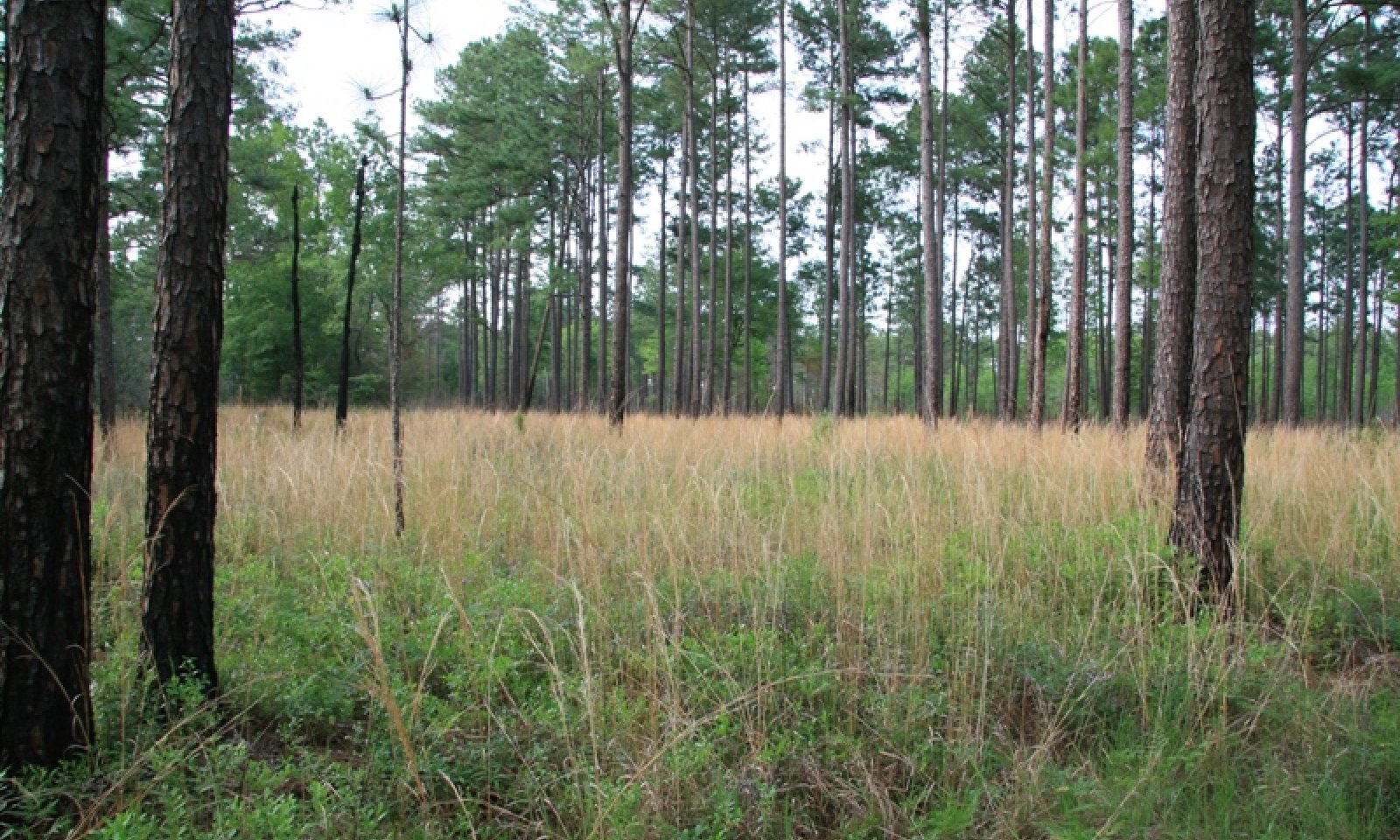

Natural Resources
Conservation Service
Ecological site R153AY001GA
Loamy Rise, Moderately Wet
Accessed: 12/21/2025
General information
Approved. An approved ecological site description has undergone quality control and quality assurance review. It contains a working state and transition model, enough information to identify the ecological site, and full documentation for all ecosystem states contained in the state and transition model.
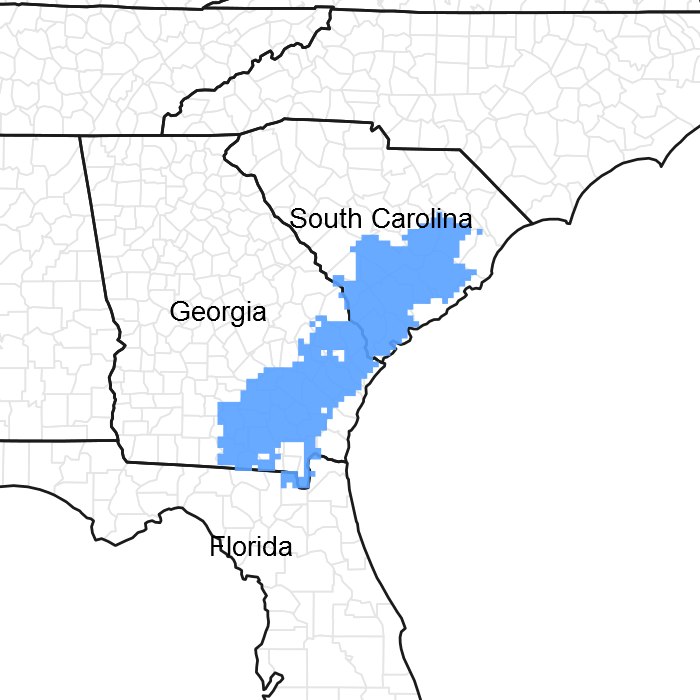
Figure 1. Mapped extent
Areas shown in blue indicate the maximum mapped extent of this ecological site. Other ecological sites likely occur within the highlighted areas. It is also possible for this ecological site to occur outside of highlighted areas if detailed soil survey has not been completed or recently updated.
MLRA notes
Major Land Resource Area (MLRA): 153A–Atlantic Coast Flatwoods
Loamy Rise, Moderately Wet ecological site occupies the southern portion of MLRA 153A. This range is illustrated by the area shaded in green on the map. This coincides with the break in the range of dominant species of wiregrass. Carolina wiregrass, Aristida stricta, occurs north of the Santee River in South Carolina. Beyrich threeawn occurs south of the Santee (Peet, 1993).
Five locations were sampled in Georgia and South Carolina. Thirty data plots were clipped to determine site production. General sampling methods followed those outlined in the National Range and Pasture Handbook (Grazing Lands Technology Institute, 1997). Vegetation sampling was conducted in accordance with guidance from the Jornada Experiment Range (Herrick et al., 2005).
The site concept was established within the MLRA regions of Georgia and South Carolina. Verification of this ecological site concept in the extreme southern region of the MLRA (Florida) is needed before it is correlated to Florida.
Classification relationships
The classification of the Loamy Rise, Moderately Wet site is difficult because of its association with savannas and flatwoods. Peet and Allard (1993) point out that, "Like "savanna", the term "flatwood" has a multiplicity of meanings..." Nelson (1986) states, "The distinction between flatwoods and savannas is, to a certain extent, artificial." For the purposes of this ESD, the terms will mean extremes of nearly treeless herbaceous-rich savannas and almost closed canopy shrub (saw palmetto and gallberry) dominated understory flatwoods.
The closest complete classifications comparable to ESDs are natural heritage reports. Florida, Georgia and South Carolina all have natural heritage publications. In these natural community reports, this site classifies as a portion of one or another broader communities. Those broader communities contain this site as one portion of either of two gradients: soil moisture or texture. Georgia's closest correlate is "[94]-Mesic Pine Lowland Forest (Pine Flatwoods)" (Wharton, 1978). The description contains an explicit diagram of an elevational moisture gradient that places this site "on slightly higher (12-14") levels." However, it does not deal with soil texture gradients. South Carolina has features of this site described in three communities: Pine Flatwoods, Pine Savannah and Pine-Saw Palmetto Flatwoods (Nelson, 1986). The Florida Natural Area Inventory's closest match is Mesic Flatwoods (Florida Natural Areas Inventory and Florida Department of Natural Resources, 1990). They state, "Mesic Flatwoods are closely associated with and often grade into Wet Flatwoods, Dry Prairie, or Scrubby Flatwoods."
The Longleaf Pine Woodland classification efforts of Robert K. Peet are the most specific to this particular ESD. They introduce a further complication in the form of a geographical divide (Peet, 2006). This divide follows an EPA ecoregion boundary at the Savannah River instead of the divide between species of wiregrass at the Santee River. The dominate portion of this site would be in Peet's Southern Coastal Plain Flatwoods, but the placement of the boundaries includes the southern portion of South Carolina classified in Peet as Atlantic Coastal Plain Flatwoods. The closest community of Peet's is 5.3.4-Pinus palustris/Serenoa repens-Quercus pumila/Aristida beyrichiana-Balduina uniflora Woodland. Peet (2006) contains links to the National Vegetation Classification types.
This site occurs in portions of EPA Level IV Ecoregions 63h-Carolina Flatwoods, 75e-Okefenokee Plains, 75f-Sea Island Flatwoods, 75g-Okefenokee Swamp, and 75h-Bacon Terraces (Griffith et al., 2001).
This site occurs in portions of US Forest Service Ecological Subregions 232C-Atlantic Coastal Flatwoods Section and 232J-Southern Atlantic Coastal Plains and Flatwoods Section (McNab, 2005).
Table 1. Dominant plant species
| Tree |
(1) Pinus palustris |
|---|---|
| Shrub |
(1) Ilex glabra |
| Herbaceous |
(1) Aristida beyrichiana |
Physiographic features
This MLRA is in Fenneman's Sea Island section of the Coastal Plain Province of the Atlantic Plain Division (Fenneman & Johnson, 1946). The overall MLRA landscape is a nearly level coastal plain crossed by many broad, shallow valleys that have widely meandering stream channels. Some short, steep slopes border the stream valleys. Elevation ranges from 25 to 165 feet.
This particular ecological site occupies relatively higher portions of this landscape, though not the highest. Local relief is mainly less than 10 feet. These sites are on slight rises and slopes of flats, generally less than 2 percent slope.
Table 2. Representative physiographic features
| Landforms |
(1)
Marine terrace
(2) Flat (3) Rise |
|---|---|
| Flooding frequency | None |
| Ponding frequency | None |
| Elevation | 25 – 165 ft |
| Slope | 2% |
| Water table depth | 12 – 30 in |
| Aspect | Aspect is not a significant factor |
Climatic features
The average annual precipitation in this area is 50 inches, ranging from 47" to 53". The maximum precipitation occurs in hurricanes, with single storms accounting for many inches. The hurricane season is from June to October. Snowfall may occur in the northern third of the area. The average annual temperature is 67 degrees F, ranging from 68 to 64 degrees F, increasing to the south. The freeze-free period averages 290 days and ranges from 277 to 351 days, increasing in length to the south. Thunderstorms are common in the warmer months, producing lightning and high winds.
Table 3. Representative climatic features
| Frost-free period (average) | 291 days |
|---|---|
| Freeze-free period (average) | 351 days |
| Precipitation total (average) | 54 in |
Figure 2. Monthly precipitation range
Figure 3. Monthly average minimum and maximum temperature
Influencing water features
A seasonal high water table (SHWT) can exist on this site at depths ranging from 12 to 30 inches. This range can be subdivided based on drainage classes. Soil series that are somewhat poorly drained have a SHWT that occurs within the range of 12 to 18 inches. Moderately well drained soils can have a SHWT that occurs within the range of 18 to 30 inches. Duration is generally November to March. Permeability rates are moderate to slow. (Soil Survey Staff, 2010).
Small depressions are scattered throughout the site that can support hydrophytic plants (e.g. Pitcher Plants).
Soil features
This ecological site is represented by soils in the Ultisols soil order. Major soil series for this ecological site are: Leefield, Goldsboro, Ocilla, Yauhannah, Stilson, and Clarendon. Map units having these soils as major components, either in consociations or complexes, make up almost 85% of the ecological site. Soil series that compose most of the remaining 15% include: Eunola, Nansemond, Irvington, Foreston, and Robertsdale. These soils have a thermic soil temperature regime, a udic soil moisture regime, and siliceous mineralogy (Soil Survey Staff, Official Series Descriptions, available online). They generally are very deep and have a loamy particle size family. Drainage classes for the selected soil series are moderately well drained to somewhat poorly drained. Depth to a seasonal high water table ranges from 12 to 30 inches.
Soils associated with this ecological site formed in the coastal plain from loamy marine and fluviomarine deposits. The associated Paleudults and Hapludults occur on marine terraces and uplands in the coastal plain.
Table 4. Representative soil features
| Surface texture |
(1) Sand (2) Loamy sand (3) Sandy loam |
|---|---|
| Family particle size |
(1) Loamy |
| Drainage class | Moderately well drained to somewhat poorly drained |
| Permeability class | Moderate to slow |
| Soil depth | 60 – 100 in |
| Available water capacity (0-40in) |
4 – 12 in |
| Soil reaction (1:1 water) (0-40in) |
3.5 – 6.5 |
Ecological dynamics
This ecological site occurs within MLRA 153A. The longleaf pine ecosystem is one of the most prominent ecosystems of the southeast and plays an important role in the ecology and economy of the southeastern United States. Although the overstory is dominated by longleaf pine, the understory provides a rich assemblage of grass and forb species.
The longleaf pine-grassland ecosystem once covered an estimated 70 million acres in the southeastern United States, and was the dominant plant community of the Coastal Plain from Virginia to east Texas. Less than 3% of the communities that were part of the historic range exist today. After loss of the trees as a result of resin harvesting and logging, areas with agriculturally favorable soils were commonly converted to crop or pasture land. In areas less suitable for agriculture, the presence of feral hogs and fire suppression inhibited regeneration of longleaf after logging (Frost, 2006). Longleaf pine systems are dependent on recurring, low-intensity fires. Without periodic fire, the grass and forb, species-rich understory becomes dominated by hardwood trees and shrubs, resulting in a decrease in species richness.
Longleaf ecosystems are fire-maintained, meaning periodic fire is critical to the existence and persistence of the longleaf pine reference plant community. Specifically, a fire frequency of 2 to 3 years is required to maintain the diverse, rich understory, and longleaf-dominated overstory (Frost, 1993). This is because the accumulation of litter that occurs in the absence of periodic hot fires inhibits the regeneration of longleaf pine, since seeds require a bare, mineral soil for germination. Also, longleaf pine is fire tolerant, giving it a distinct competitive advantage over potentially encroaching, fire-sensitive shrubs such as inkberry, dwarf huckleberry (Gaylussacia dumosa) and shiny blueberry, and hardwood tree species such as oaks (Quercus spp.), hickories (Carya spp.) and sweetgum (Liquidambar styraciflua). In addition, shading by broadleaf, woody species will inhibit the regeneration and growth of understory grasses and forbs, further moving the site toward transition from the reference community. With fire frequency greater than three years, hardwood trees and shrubs can be more difficult to control. There is evidence that these systems evolved on large landscape scales in association with a 1 to 3 year fire regime (Komarek, 1972). As a result of fire suppression during the end of the 19th and most of the 20th century, old-growth trees and the natural understory vegetation that would have been characteristic of the pre-European ecosystem are almost non-existent (Peet and Allard, 1993).
Before European settlement, large herbivores such as American bison (Bison bison) were integral parts of these habitats and were likely important in defining the structure of the historic plant community. Settlers grazed cattle and introduced hogs to the Southeast, but cattle grazing has not been a common practice in the few remaining natural longleaf areas at least since the early 20th century.
Restoration
Of the remaining areas of longleaf pine ecosystems, only about half are managed, leading to substantial alterations in ecosystem structure and composition (Outcalt, 2000). Pre-settlement fire regimes were typified by short fire-return intervals (FRI = 1–3 years), low-intensity surface fires ignited by lightning and late Holocene Native Americans (Christensen, 1981). Fire suppression transforms these once open savanna–woodland ecosystems into closed canopy forests, with reduced floral and faunal species richness, as well as heavy accumulations of surface fuels. In some cases, changes from one state to another are reversible, but the return path is different from the path taken in the original change. Therefore, a thorough evaluation of reversibility is necessary before adopting a program of rehabilitation. For instance, a case study by Groffman and others (2004) revealed that re-introduction of fire to areas that were suppressed was not effective in reversing the loss of longleaf pine because changes in the distribution of the vegetation lost the ability to transmit fire. Therefore more aggressive management of fire and vegetation may be required. A summary has been provided on general techniques and strategies for restoring upland ecosystems for longleaf pine as it relates to this ESD. On-site evaluations are required in order to develop specific recommendations and management prescriptions for desired states.
Prescribed fire is the most common management application for restoring and maintaining longleaf pine ecosystems. Longleaf pine and wiregrass in the understory function together as keystone species that facilitate but are resistant to fire (Platt et. al., 1988). Growing season burns, especially if frequent, can top kill and remove invading hardwoods effectively while winter fires are best suited for the reduction of hazardous fuels. Seasonality of fires will have varying results, depending on the desired outcome (i.e., vegetation control, seed bed preparation, wildlife forage, etc.) and the specific set of environmental conditions that govern the site.
Chemical control of vegetation, such as the selective application of herbicides can be useful in accelerating the restoration process-especially in ecosystems degraded by oak invasion. For instance, low rates of hexazinone application have shown to be very effective in decreasing midstory hardwoods, with little or no short-term reductions in understory grasses and forbs on sandhills sites (Brockway et. al., 1998). Other herbicides used in forest management include Velpar L and Pronone 10G. However, the rate of restoration can be significantly more rapid when chemical application are combined with prescribed burning (Boyer, 1991).
Mechanical drum shredders can control large mid-story vegetation, and is a recommended method for accomplishing restoration of severely degraded longleaf pine forests. However, the use of mechanical control methods are often expensive, and their effectiveness is can be short-lived because brush recovers rapidly in the Southeastern coast plain (Haywood, 2004a). In most instances, a combination of management practices is recommended, in addition to the planting and monitoring of native vegetation. This is especially true when restoring severely degraded areas.
The State and Transition Diagram shown in the next section suggests pathways between states associated with different management practices implemented on this site. This information is intended to show potential results; it does not mean that this would be the end result in every instance. Local professional guidance should be sought before pursuing any management plan.
State and transition model
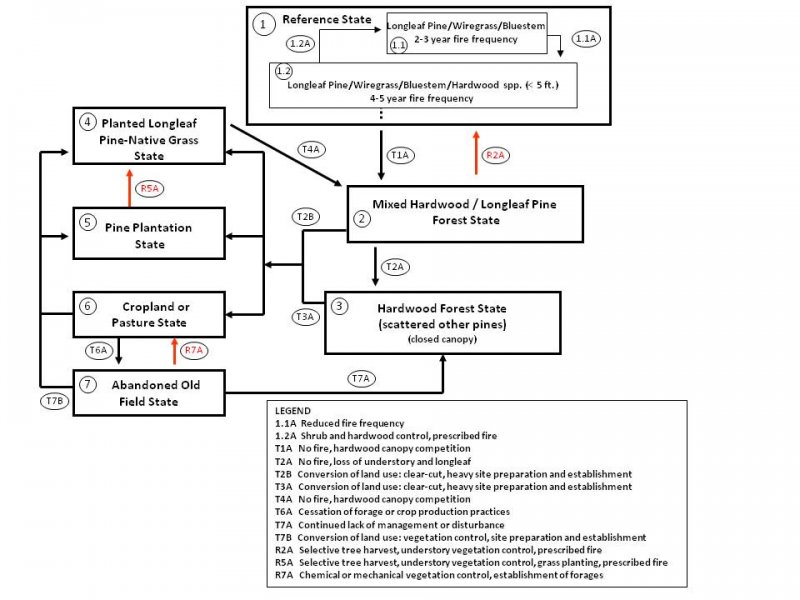
Figure 4. Longleaf 153A STM
More interactive model formats are also available.
View Interactive Models
More interactive model formats are also available.
View Interactive Models
Click on state and transition labels to scroll to the respective text
Ecosystem states
States 3, 7 and 4 (additional transitions)
State 1 submodel, plant communities
State 2 submodel, plant communities
State 3 submodel, plant communities
State 4 submodel, plant communities
State 5 submodel, plant communities
State 6 submodel, plant communities
State 7 submodel, plant communities
State 1
Longleaf /Wiregrass/Bluestem
Plant community species composition and productivity data that follow were determined through on-site inventory at five locations that are representative of the reference community. Transition pathways from one plant community phase to another within the reference state (state 1) are described below. These pathways describe managment practices associated with triggers and thresholds of these transitions.
Community 1.1
Reference Community - Longleaf Pine/Wiregrass/Bluestem

Figure 5. Fig. 1. Reference state, community 1.1, photo 1
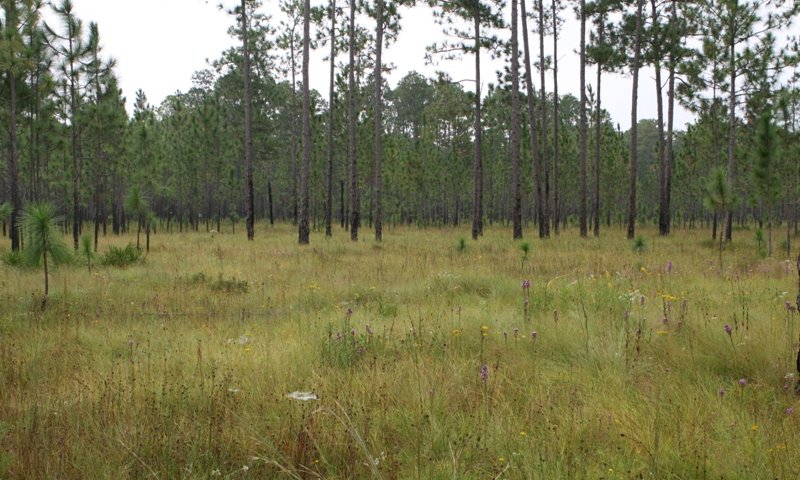
Figure 6. Fig. 2. Reference state, community 1.1, photo 2
The overstory of the community is dominated by, and often exclusively, longleaf pine. Canopies are open (30 to 40% canopy closure) and uneven-aged, consisting of variably sized, even-aged patches. Patches result from recruitment into openings created by windstorms, timber harvest, hot fires, or insect-induced mortality. Slash (Pinus elliottii), shortleaf (P. echinata), or loblolly pine (P. taeda) may occur as a minor component of the overstory. However, historical accounts indicate that mixed-species canopies may have been less common on these sites than in the shortleaf and loblolly pine regions of the Southeast (Bartram, 1791). Species richness is very high in the herbaceous understory of these communities (Peet and Allard, 1993). The grasses and forb understory has the potential to produce over 3000 lbs. of biomass per acre annually. Grass species include wiregrass (Aristida beyrichiana), bluestems (Schizachyrium and Andropogon spp.), various dropseeds (Sporobolus spp.), toothache grass (Ctenium aromaticum), rosette grass (Dichanthelium spp.), and switchgrass (Panicum virgatum). Sporobolus and Dichanthelium species commonly associated with the community but not seen during our on-site data collection are blood panicgrass (Dichanthelium consanguineum), roughhair rosette grass (Dichanthelium strigosum) and Carolina dropseed (Sporobolus pinetorum). Forbs that occur in these diverse communities include hairy chaffhead (Carphephorus spp.), goldenrod (Solidago spp.), tickseeds (Coreopsis spp.), sunflower (Helianthus spp.), purple false foxglove (Agalinis purpurea), Walter’s aster (Symphyotrichum walteri), narrowleaf silkgrass (Pityopsis graminifolia), and ticktrefoil (Desmodium spp.). Common shrubs and shrub-like species include Piedmont staggerbush (Lyonia mariana), huckleberry (Gaylussacia spp.), inkberry (Ilex glabra), saw palmetto (Serenoa repens), wax myrtle (Morella cerifera), shiny blueberry (Vaccinium myrsinites), and runner oak (Quercus margarettae). Plant community species composition and productivity data that follow were determined through on-site inventory at five locations that are representative of the reference community.
Forest overstory. Overstory is predominately or exclusively longleaf pine with slash or loblolly pine occurring occasionally.
Forest understory. Understory is grass-dominated community containing a species-rich collection of forbs. Scattered low-growing shrubs and hardwood trees may be present.
Figure 7. Annual production by plant type (representative values) or group (midpoint values)
Table 5. Annual production by plant type
| Plant type | Low (lb/acre) |
Representative value (lb/acre) |
High (lb/acre) |
|---|---|---|---|
| Tree | 2000 | 3200 | 4000 |
| Grass/Grasslike | 1000 | 2500 | 3500 |
| Forb | 300 | 600 | 900 |
| Shrub/Vine | 100 | 250 | 400 |
| Total | 3400 | 6550 | 8800 |
Table 6. Ground cover
| Tree foliar cover | 25-45% |
|---|---|
| Shrub/vine/liana foliar cover | 1-8% |
| Grass/grasslike foliar cover | 50-70% |
| Forb foliar cover | 5-20% |
| Non-vascular plants | 0% |
| Biological crusts | 0% |
| Litter | 0% |
| Surface fragments >0.25" and <=3" | 0% |
| Surface fragments >3" | 0% |
| Bedrock | 0% |
| Water | 0% |
| Bare ground | 0% |
Table 7. Canopy structure (% cover)
| Height Above Ground (ft) | Tree | Shrub/Vine | Grass/ Grasslike |
Forb |
|---|---|---|---|---|
| <0.5 | 0% | 0-5% | 5-15% | 2-4% |
| >0.5 <= 1 | 0% | 1-5% | 10-20% | 2-10% |
| >1 <= 2 | 0-1% | 1-8% | 20-35% | 2-10% |
| >2 <= 4.5 | 0-3% | 1-4% | 15-25% | 2-5% |
| >4.5 <= 13 | 0% | 0% | 0-10% | 0% |
| >13 <= 40 | 0% | 0% | 0% | 0% |
| >40 <= 80 | 25-45% | 0% | 0% | 0% |
| >80 <= 120 | 0-10% | 0% | 0% | 0% |
| >120 | 0% | 0% | 0% | 0% |
Figure 8. Plant community growth curve (percent production by month). GA0001, Longleaf Pine Flatwoods.
| Jan | Feb | Mar | Apr | May | Jun | Jul | Aug | Sep | Oct | Nov | Dec |
|---|---|---|---|---|---|---|---|---|---|---|---|
| J | F | M | A | M | J | J | A | S | O | N | D |
| 0 | 4 | 6 | 10 | 14 | 16 | 14 | 11 | 10 | 6 | 6 | 3 |
Community 1.2
Longleaf/hardwood/wiregrass/bluestem
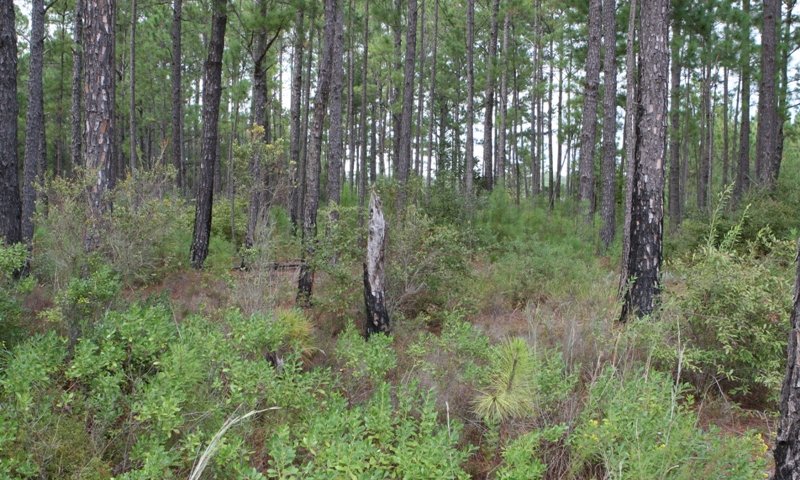
Figure 9. Fig. 3. Reference state, community 1.2, photo 1
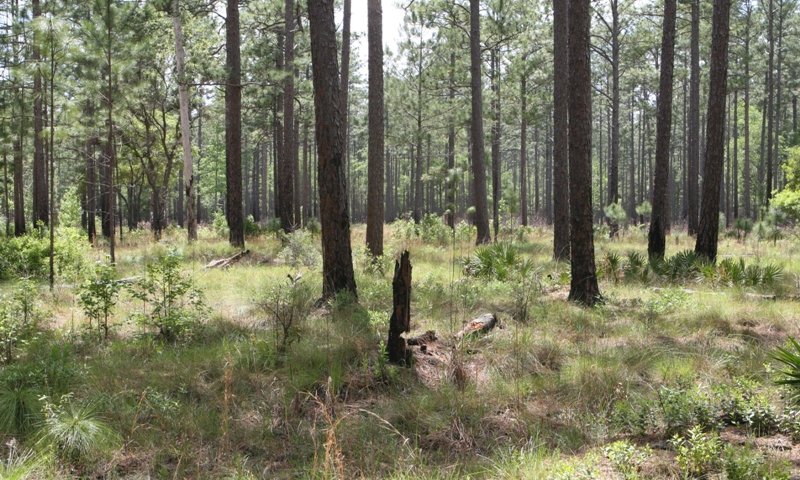
Figure 10. Fig. 4. Reference state, community 1.2, photo 2
Hardwood tree and shrub species in longleaf pine forests are kept in check by low-intensity surface fires with a return interval (fire frequency) of no more than 3 years. At least one growing season burn (April-June) for every 2 dormant season burns is necessary to prevent the gradual accumulation of hardwood rootstocks because dormant season burns will only top-kill many species. Wiregrass will not be reproductive unless plants are subjected to growing season fire. A fire return interval of 4 or 5 years hardwoods will increase hardwood foliar cover from < 30% to > 50% and will increase in height from < 3 feet to nearly 5 feet. Hardwoods will begin to shade the ground and reduce the cover and vigor of the grasses that provide much of the fine fuels needed to carry a prescribed burn. The site is now at risk of becoming dominated by hardwood trees and shrubs, reulting in a transition to the mixed pine/hardwood forest state. It is still possible to restore the site to the reference state by applying a dormant season burn to top kill hardwoods and reduce the accumulating coarse fuel load, followed approximately 18 months later with a growing season burn to reduce the number and vigor of hardwood rootstocks. In some cases a second growing season burn approximately 24 months later may be necessary to further reduce the number of hardwood root stocks (Johnson and Gjerstad, 2006).
Figure 11. Annual production by plant type (representative values) or group (midpoint values)
Table 8. Annual production by plant type
| Plant type | Low (lb/acre) |
Representative value (lb/acre) |
High (lb/acre) |
|---|---|---|---|
| Tree | 2200 | 3600 | 4600 |
| Grass/Grasslike | 1000 | 2100 | 3000 |
| Forb | 200 | 500 | 800 |
| Shrub/Vine | 150 | 350 | 600 |
| Total | 3550 | 6550 | 9000 |
Table 9. Ground cover
| Tree foliar cover | 30-50% |
|---|---|
| Shrub/vine/liana foliar cover | 1-8% |
| Grass/grasslike foliar cover | 40-60% |
| Forb foliar cover | 5-15% |
| Non-vascular plants | 0% |
| Biological crusts | 0% |
| Litter | 0% |
| Surface fragments >0.25" and <=3" | 0% |
| Surface fragments >3" | 0% |
| Bedrock | 0% |
| Water | 0% |
| Bare ground | 0% |
Table 10. Canopy structure (% cover)
| Height Above Ground (ft) | Tree | Shrub/Vine | Grass/ Grasslike |
Forb |
|---|---|---|---|---|
| <0.5 | 0% | 1-5% | 5-12% | 2-4% |
| >0.5 <= 1 | 0-1% | 1-6% | 10-18% | 2-8% |
| >1 <= 2 | 1-2% | 1-8% | 20-30% | 2-8% |
| >2 <= 4.5 | 1-2% | 1-5% | 15-20% | 1-3% |
| >4.5 <= 13 | 3-6% | 0% | 0-5% | 0% |
| >13 <= 40 | 0% | 0% | 0% | 0% |
| >40 <= 80 | 30-45% | 0% | 0% | 0% |
| >80 <= 120 | 0-10% | 0% | 0% | 0% |
| >120 | 0% | 0% | 0% | 0% |
Pathway 1.1A
Community 1.1 to 1.2


Triggers- Fire frequency of 1 to 3 years controls encroaching hardwood trees and shrubs. In addition, this fire frequency prevents development of a litter layer that would inhibit longleaf seed germination. Threshold- Fire less frequent than every 3 years, and/or fires only occuring in the dormant season allow hardwood trees to reach 1-inch basal diameter and 3-foot height, making them more tolerant of moderate intensity fire (Brockway and Lewis, 1997).
Pathway 1.2A
Community 1.2 to 1.1


Apply a dormant season burn to top kill hardwoods and reduce the accumulating coarse fuel load, followed approximately 18 months later with a growing season burn to reduce the number and vigor of hardwood rootstocks. In addition to providing hotter fires to help control hardwoods, prescribed burns during the growing season are critical for wiregrass seed production. In some cases a second growing season burn approximately 24 months later may be necessary to further reduce the number of hardwood root stocks. Mechanical or chemical control methods may also be necessary to reduce initial hardwood tree and brush density.
Conservation practices
| Brush Management | |
|---|---|
| Prescribed Burning | |
| Prescribed Grazing |
State 2
Mixed Hardwood/Pine Forest
The mixed longleaf pine, hardwood forest state is characterized by a more closed canopy relative to the reference state. Hardwood trees such as post and blackjack oak, sweetgum and blackgum compete with the remaining longleaf for canopy space. Shrub density and mass is increased relative to the reference state. Herbaceous species richness and productivity will continue to decline with canopy closure and the resulting decrease in sunlight penetration.
Community 2.1
Mixed Hardwood/Pine Forest
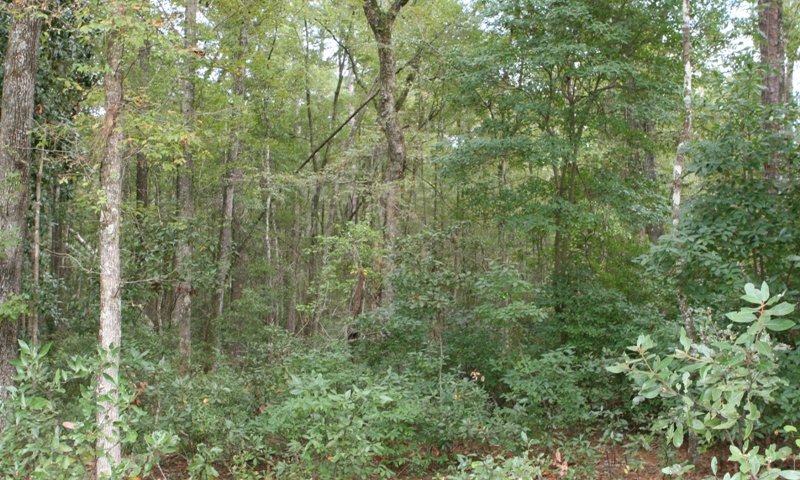
Figure 12. Fig. 5. Mixed hardwood/pine, photo 1
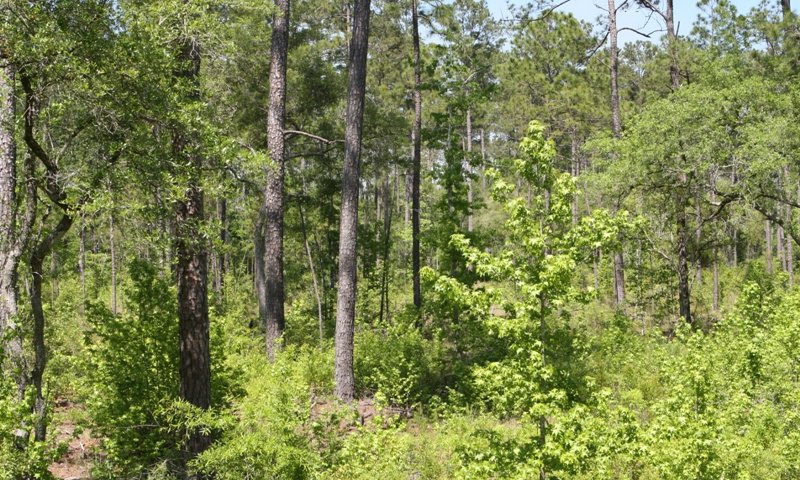
Figure 13. Fig. 6. Mixed hardwood/pine, photo 2
Longleaf pine ecosystems develop when the fire return interval is 1-3 years. The vegetation associated with longleaf pine reflects the frequency and severity of burning. In the past, frequent fires resulted in open, park like stands of longleaf with few other woody plants and a ground cover dominated by grasses and forbs. With a reduction in fire occurrence, a fire return interval of 5 years or more, hardwoods and other pines encroach on the longleaf forest. Some of the encroaching trees reach basal diameters greater than four inches, allowing them to survive any surface fires that might occur. Within the range of slash pine (Pinus elliottii), this species becomes increasingly important. For MLRA 153A slash pine may occur in northeastern FL, southeastern GA and southeastern SC. Elsewhere loblolly and/or shortleaf (P. taeda and P. echinata) and hardwoods gradually replace longleaf pine (Burns and Honkala, 1990). Hardwoods most closely associated with longleaf pine on Atlantic Coastal Flatwood sites include post, blackjack, turkey, sand post, dwarf live, running and water oaks (Q. marilandica, Q. stellata, Q. laevis, Q. margaretta, Q. minima, Q. pumila and Q. nigra); flowering dogwood (Cornus florida); blackgum (Nyssa sylvatica); sweetgum (Liquidambar styraciflua); and persimmon (Diospyros virginiana. Common shrubs include gallberry (Ilex glabra), yaupon (I. vomitoria), southern bayberry (Myrica cerifera), shining sumac (Rhus copallina), blueberry (Vaccinium spp.), huckleberry (Gaylussacia spp.), and blackberry (Rubus spp.). Basal area per acre of tree species increases from approximately 40-60 square feet per acre (30-45 % canopy closure) in the reference state to 80-100 sq.ft./ac. (approaching 100% canopy closure) in the Mixed Pine/Hardwood State, with longleaf pine typically comprising only 30-50 sq.ft./ac. Grasses and forbs are greatly reduced due to shade from overstory trees, resulting in a degraded stand structure and a reduction in fine fuels needed to carry a prescribed burn.
State 3
Hardwood Forest
Lack of a favorable environment for regeneration and competition from hardwoods and other pines has resulted in either longleaf being lost from the site, or remaining individual trees being widely dispersed. Canopy closure is 100%, and dominated by oaks, hickories and sweetgum. Because of lack of sunlight penetration to the understory, shrub size and numbers are reduced relative to state 2, and herbaceous species characteristic of the reference state are no longer present.
Community 3.1
Hardwood Forest
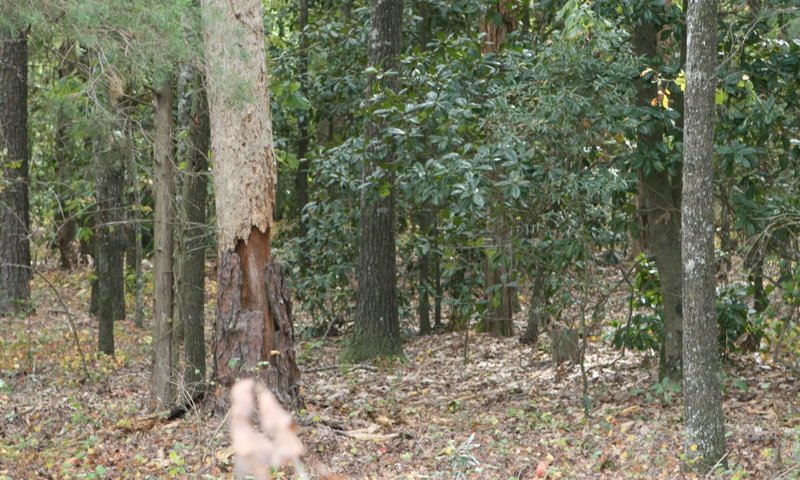
Figure 14. Fig. 7. Hardwood forest
With a continued reduction in fire occurrence, such as a fire return interval greater than 10 years, hardwoods and other pines further encroach on the longleaf forest. Many encroaching trees exceed basal diameters of 4 inches, allowing them to survive any surface fires that occur. Within the range of slash pine (Pinus elliottii), this species becomes increasingly important. For MLRA 153A slash pine may occur in northeastern FL, southeastern GA and southeastern SC. Elsewhere loblolly (P. taeda) and hardwoods continue to replace longleaf pine. Hardwoods most likely to reach the forest canopy include southern red, blackjack, post, sand post and water oaks (Quercus falcata, Q. marilandica, Q. stellata, Q. margaretta and Q. nigra); blackgum (Nyssa sylvatica); sweetgum (Liquidambar styraciflua); red maple (Acer rubrum);mockernut, pignut and sand hickory (Carya tomentosa, C. glabra and C. pallid) and persimmon (Diospyros virginiana). The more common shrubs include flowering dogwood (Cornus florida), gallberry (Ilex glabra), yaupon (I. vomitoria), southern bayberry (Myrica cerifera), shining sumac (Rhus copallina), blueberry (Vaccinium spp.), huckleberry (Gaylussacia spp.), and blackberry (Rubus spp.). Basal area per acre of tree species increases from 80-100 sq.ft./ac. in the mixed pine/hardwood state to more than 120 sq. ft./ac and 100% canopy closure. Longleaf pine is typically absent from this state, or may comprise only 10-30 sq.ft./ac. Understory grasses, forbs and shrubs disappear due to deep shade from overstory trees, causing a further simplification in stand structure and a further reduction in fine fuels needed to carry a prescribed burn. Although possible, restoration to state 2 would be difficult to justify both economically and from the perspective of addressing resource concerns. Thus, there is not a restoration pathway indicated in the state and transition model. Maintaining the hardwood forest state with normal silvicultural treatments such as selection and group selection timber harvests is a viable option. It is not known if it is possible to restore the reference state from state 3 simply because of the loss of native ground cover species over time, and the significant changes in mid and overstory community structure. If cultivation or heavy site preparation for tree planting have occurred, few if any native groundcover species, especially wiregrass, are likely to be present in the seed bank. Even without cultivation or heavy site preparation, fire exclusion for 30 or more years will likely deplete the seed bank such that the full complement of native ground cover species cannot be recovered (Frost, 1993). Efforts to restore longleaf pine from existing hardwood forest have had limited success. In some cases removal of the hardwood overstory and restoration of a normal fire regime has resulted in restoration of several native groundcover species. However, it is noteworthy that “dominant rhizomatous and bunch grasses” and “regionally rare species” are among the species most likely to be lost when fire frequency is drastically reduced. In addition, mature longleaf pine that would provide a source of seed critical for restoration are rare, and often do not occur in this state. Since these species are critical to the character of the reference state, we do not show a pathway back from state 3 to the reference state. State 4, planted longleaf pine-native grass state is the closest to the reference state that can be achieved from state 3 (Walker and Silletti, 2006). In many cases, establishing state 4 will achieve a manager's restoration goals, including restoring essential habitat elements for threatened and endangered wildlife species, establishing fine fuels to maintain a normal fire regime, and creating an aesthetically desirable setting.
State 4
Planted Longleaf Pine-Native Grass
Longleaf pine are planted to grow trees to a marketable size, and in the interim sell pine straw as an urban landscape mulch, or to attempt to restore a system that would be similar to the reference plant community (Alig et al., 2002). However, the diversity and richness of herbaceous species and associated animals found in the reference state are unlikely to be achieved. Grasses commonly planted in this state are wiregrass, little bluestem, Indiangrass and switchgrass.
Community 4.1
Planted Longleaf Pine-Native Grass
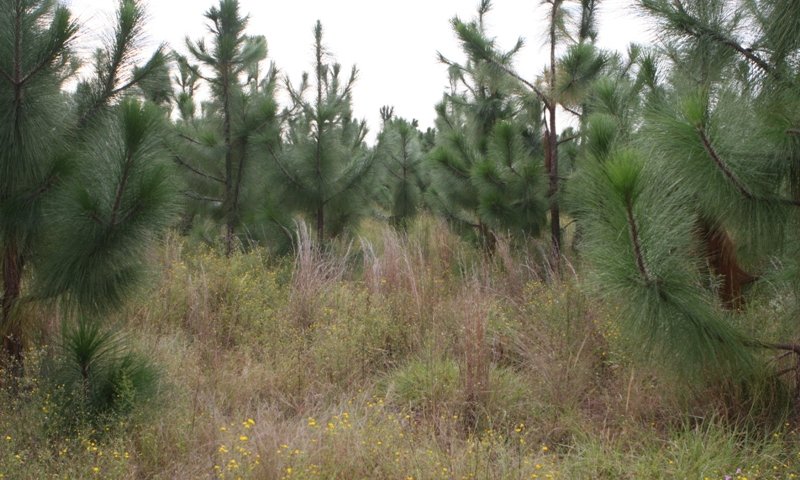
Figure 15. Fig. 8. Planted longleaf-native grass
A shift to a planted longleaf pine - native grass state could be made from any other forested state (2, 3 or 5) in the ecological site by clear cutting, preparing the site and establishing a pine plantation (Fox et al., 2004). From states 6 and 7, cropland, pasture or old Field, subsoiling will probably be necessary when preparing the site for tree planting. A planted longleaf pine - native grass state can be managed with fire and utilized as wildlife habitat or livestock grazing land. If shifted from a hardwood forest state (2 or 3), clear cut hardwood trees will sprout from the roots and will have to be controlled, usually with an herbicide. If not controlled, hardwood trees and shrubs will likely take over the site, overtopping and out-competing the longleaf seedlings for light. If shifted from a pine plantation state (5), there is a large variety of species that could occur in the understory including trees, shrubs, vines, grasses, and grass like species, forbs, and ferns. Some grass species that may occur are bluestem spp., Muhlenberg maidencane, threeawn spp., toothache grass, beaked panicgrass, paspalum spp., lopsided Indiangrass, Curtis’ dropseed, and others. Grasslike species that may occur include sedges, beaked sedges, rushes in the wetter areas, nutrushes, slender fimbry, and hairy fimbry. Supplemental planting of native understory species may or may not be needed depending on condition of the seed bank and the goals and objectives of the land manager. If pine species other than longleaf were originally established the plantation can be shifted to longleaf either gradually with selective cutting, prescribed burning and longleaf seedling planting, or all at once with a clearcut, site prep and longleaf plantation establishment. If shifted from a pasture, cropland, or abandoned field state, the understory vegetation will likely be determined by the existing vegetation prior to tree planting and the field preparation that took place. If no permanent vegetation was present (i.e. crop field) then annual species will likely dominate the understory. If perennial grasses were present (i.e. pasture or abandoned field) then these grasses may return along with other annual species occasionally accompanied by green briar and blackberry. All understory species will start to diminish as the tree canopy closes unless thinning is utilized to manage for understory vegetation. More desirable native grasses and forbs will not be likely to appear from the seedbank if there is any history of cultivation. Supplemental planting will be necessary if native understory species restoration is a goal for the property. Planted longleaf pine - native grass states will need to be seeded or plugged to native warm season grasses such as big and little bluestem, Indiangrass, switchgrass, wiregrass and other native species that are commonly utilized as wildlife habitat. In these cases, tree canopy closure must be managed to allow for adequate light for understory vegetation to thrive.
State 5
Pine Plantation
Loblolly and slash are the pine species most often planted in the area to produce a marketable wood product. Subsequent management will be in keeping with long-term and interim objectives and may include vegetation management with prescribed burning, and periodic stand thinning.
Community 5.1
Pine Plantation
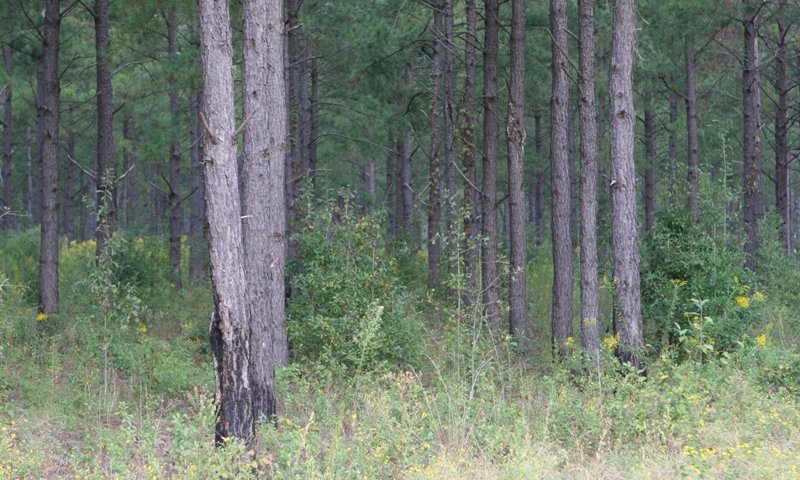
Figure 16. Fig. 9. Pine plantation
The southern U.S. is rich with a variety of pine species, primarily loblolly, shortleaf, slash and longleaf (Pinus taeda, P. echinata, P. elliottii and P. palustris) (Fox et al., 2004). Pine forest community (plantation state) is recognized when the canopy of the forest stand becomes dominated with southern pine native to the Atlantic Coast Flatwoods. Each species is diverse in its growth, development, and product, while sharing some very basic commonalities. Southern pines are pioneer species that regenerate naturally on disturbed sites, where fire has occurred or old croplands have been abandoned. Southern pines can be managed in a variety of different ways and for a variety of different purposes in the Atlantic Coast Flatwoods MLRA including timber production, wildlife habitat, scenic beauty, carbon sequestration, biomass production, pine straw production, silvopasture, or a combination of purposes. Pine plantations in the Atlantic Coast Flatwoods are primarily managed for pulpwood or higher value products such as saw and veneer logs or utility poles using even aged management that ultimately calls of clear cutting and re-planting at the end of a specified rotation age. Precommercial thinning may occur as early as 5-10 years after stand establishment and commercial thinning may occur at approximately 10 year intervals, usually producing pulpwood. Pine plantations usually undergo a final harvest between 25 and 45 years of age, but shorter rotation crops of 15 to 18 years are also considered. Silviculture practices include but are not limited to: site preparation, prescribed burning, tree planting, weed control, fertilization, and thinning (Alig et al., 2002). Alternative management prescriptions have been developed to allow for increased plant diversity, especially in the understory, improved wildlife habitat, and uneven aged and mixed species overstories. Essentially this alternative management prescriptions call for heavier thinning, more frequent prescribed burning and either planting or allowing natural regeneration of native grasses, forbs, shrubs and pine and/or hardwood trees. A proportion of the mature trees are allowed to reach much greater age than typical rotation ages for timber management purposes, creating greater variety of tree sizes and canopy structure. The Pine Plantation state can be managed in a way to restore either the Planted Longleaf Pine-Native Grass state (state 4) or the Mixed Pine-Hardwood state (state 2). The pine plantation state can be maintained indefinitely unless a major disturbance such as a crown fire, inclement weather condition, pest, or disease contributes to eliminating the stand. Hardwood tree species will encroach after any thinning operation and must be controlled with prescribed fire, herbicides or a combination of both if a pure pine stand is desired.
State 6
Cropland or Pasture
If a pine plantation is not established, the most common agricultural use of the site is pasture or hay production. Fruit and vegetable production, and row crops can be regionally important.
Community 6.1
Cropland or Pasture
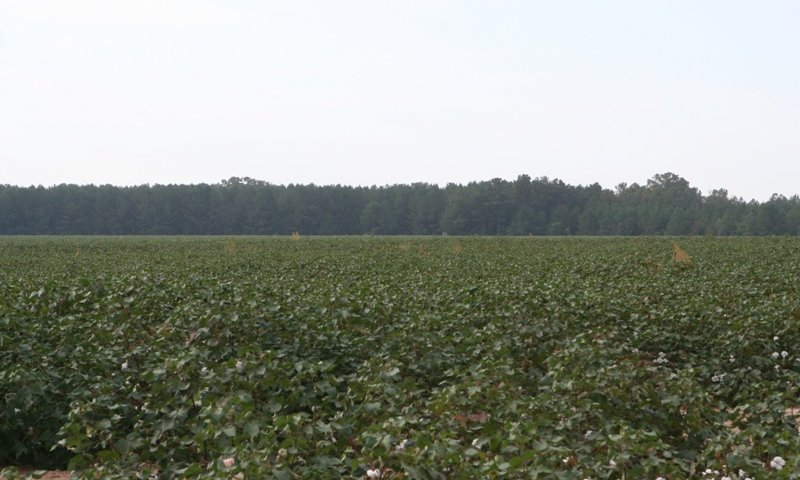
Figure 17. Fig. 10. Cropland or pasture
The introduced, warm-season perennials, bahiagrass and bermudagrass are the species primary planted for grazing and hay on this ecological site. Bahiagrass is highly tolerant of saturated soils, while most bermudagrass varieties are not adapted to extended periods of standing water or poorly drained conditions. On less intensively managed fields, other warm season grass species are also found, and may become predominant. These include dallisgrass, carpetgrass, broadleaf signalgrass, and crabgrass. Weedy species commonly occur, and they can constitute a significant portion of the plant biomass when conditions become less favorable for the preferred forage species. Some of the species found include Carolina horsenettle, dogfennel, broomsedge bluestem, dock, bitter sneezeweed, and Johnsongrass. Management- and environment-related factors that can contribute to poor forage growth and favorable conditions for weed establishment and growth in pasture and hayland include decreased soil fertility, low soil pH, improper grazing or harvest management, and extended drought. Although permanent grass sods and pine plantations are the most common agricultural use, cotton, peanuts, corn, and fruit and vegetables are grown on these soils. Cultivation associated with annual cropping systems significantly depletes the understory seed bank commonly found with state 1.
State 7
Abandoned Old Field
When management or regular disturbances cease on row crop or forage land, weedy and woody species become established.
Community 7.1
Abandoned Old Field
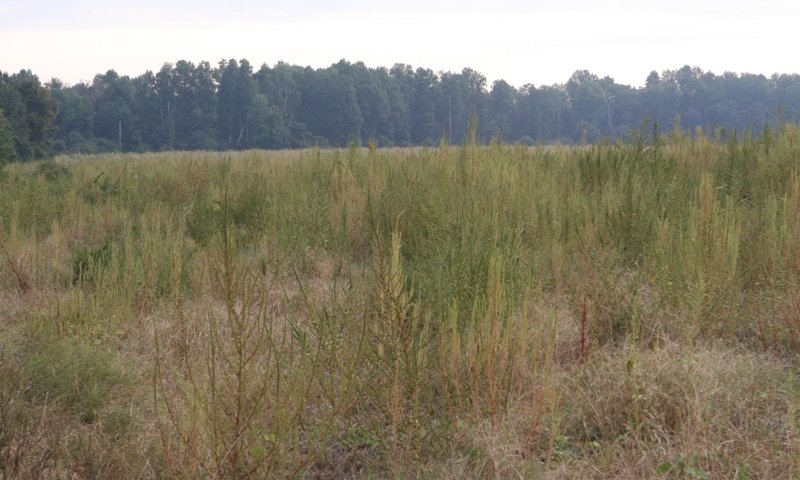
Figure 18. Fig. 11. Abandoned old field
The abandoned field state is recognized by secondary plant community succession. After agricultural practices have ceased, weedy small herbaceous plants dominate the site. This stage of succession can include hairy crabgrass, annual ragweed, poorjoe, Indian goosegrass, bermudagrass, yellow nutsedge, nutgrass, Carolina desert-chicory, henbit deadnettle, java-bean, man of the earth morninglory and cypressvine morningglory. Taller weedy plants such as spiny amaranth, camphorweed, canadian horseweed, dog fennel, yankeeweed, canada goldenrod and american pokeweed become evident generally within the first year or two. After about 3 to 5 years partridge pea and grasses such as broomsedge bluestem and purpletop tridens can dominate. Along the edge of wet areas chalky bluestem can be very evident. As the soil is modified with vegetation later succession of shrubs and trees will appear and begin to shade out some of the earliest weedy vegetation. Common persimmon, sweetgum, eastern red cedar, loblolly pine, slash pine and longleaf pine will appear if seed sources are adequate. Fire exclusion will result in a hardwood or a mixed hardwood pine community including southern red oak, darlington oak, runner oak, water oak, and other hardwoods. More well drained sites can include pignut hickory and mockernut hickory. If fire is introduced and managed the longleaf pine plant community should dominate with its rich diversity of understory and especially ground cover plants which will include herbaceous, woody, legumes, composites, ericads, grasses and others.
Transition T1A
State 1 to 2
Triggers – Decrease in Fire Frequency. When fire is removed from the system for more than five years, the site may begin transitioning to a mixed pine/hardwood forest state. Frequent, low-intensity fire is the dominant natural ecological force. Absence of fire beyond the natural range of return intervals (2-3 years) results in both rapid and long term changes of vegetation. Communities will show evidence of change after only a few years (3) without fire. Encroachment by hardwood trees and other pines is reversible for several years, but eventually becomes irreversible without persistent management and costly methods (Walker and Silletti, 2006). Using dormant season burns exclusively will reduce wiregrass. This results in reduction of fine fuels, lowering fire intensity potentially allowing survival of hardwood species. Exclusion of fire allows accumulation of litter which hinders longleaf pine germination as longleaf pine requires an exposed mineral soil free of surface litter for germination. In addition, due to competition seedlings will not elongate. Threshold – With lack of fire, hardwood species exceed 3-inch basal diameter and fire mortality rates decline.
Restoration pathway R2A
State 2 to 1
This restoration pathway is valid for a tract that transitioned to state 2 from state 1 only. It does not apply to areas that transitioned to state 2 from any other state (4). Suitable restoration techniques depend on the degree of ecosystem degradation, including soil seed bank depletion. Effective hardwood and mid-story shrub removal may be accomplished by mechanical means and use of selective herbicides. Removal of over story hardwoods significantly improves regeneration and growth of longleaf seedlings, and increases understory herbaceous vegetation. Once sufficient fine fuels exist, a prescribed burn should be conducted (March to July). Burning August-September should be avoided to minimize mortality to young longleaf pine seedlings. Once longleaf pine regeneration has been reestablished, and hardwood competition is minimal, a two-year dormant season burn will minimize fuel accumulation and should control mid story species. To expedite restoration to the reference plant community, periodic growing season burns should be included in the fire regime. Efforts to establish herbaceous understory species may need to be undertaken if soil seed bank is severely depleted. Sites dominated by longleaf pine with native understory (Moderately degraded-R2A) - Frequent growing-season fires are needed to adequately control competing woody plants on upland sites with better soils. As on flatwoods sites, frequent growing season fires over many years are required to reduce the hardwood rootstocks (Boyer, 1990a). As in other longleaf pine ecosystem types, a series of dormant-season fires may be necessary to gradually reduce fuel levels before growing season burning begins. Where wiregrass components are evident in the understory, selective herbicide application may be favored over mechanical reduction of non-merchantable woody species in readjusting species composition and dominance (Boyer, 1991). Sites dominated by other species (Severely degraded-Closed Canopy)- Repeated and prolonged treatment with prescribed fire should eventually reduce the abundance and cover of woody plants in the understory. It is probable that at least a portion of the native understory still exists in the soil seed bank or as suppressed individuals (Varner et. al., 2000). Therefore, restoration would begin with burning to reduce fuel and initiate control of woody shrubs and hardwoods. If timber harvest is not a practical option felling/girdling or herbicide may be used to reduce unwanted mid-story and overstory pine and hardwood trees. In summary, areas that are severely degraded may require growing season/dormant season annual fires, mechanical removal and herbicide treatment of an encroaching midstory and overstory pine and hardwood trees. To facilitate restoration, native plantings of desired species are recommended. The time it takes to restore the reference plant community will depend in large part on the intensity of the restoration effort. Relatively aggressive approaches that include use of herbicides, mechanical removal of competing species, and replanting of desirable species can shorten the process. However, depending in part on the degree of site disturbance, restoration to the reference plant community may take 20 years or more after appropriate management has been implemented.
Conservation practices
| Prescribed Burning | |
|---|---|
| Tree/Shrub Establishment |
Transition T2A
State 2 to 3
Triggers - Persistence and increases in hardwood cover causes a decrease in herbaceous understory vegetation Threshold – 100% canopy cover dominated by hardwoods and loss of longleaf pine from the state; loss of herbaceous understory species from the state, including seed bank depletion.
Transition T2B
State 2 to 4
Clear cut. Mechanical and chemical control of remaining vegetation. Site prep (K-G blade, root rake, and disking) for grass and tree establishment. Plant native grasses and forbs. Plant longleaf pine spaced to allow grass establishment.
Transition T3A
State 3 to 4
Clear cut. Mechanical and chemical control of remaining vegetation. Site preparation (K-G blade, root rake, and disking) for grass and tree establishment. Plant native grasses and forbs. Plant longleaf pine spaced to allow grass establishment.
Transition T3A
State 3 to 5
Clear cut. Mechanical and chemical control of remaining vegetation. Site preparation (K-G blade, root rake, and disking) for tree establishment. Plant pines (slash or loblolly) at recommended rates.
Transition T3A
State 3 to 6
Clear cut. Mechanical and chemical control of remaining vegetation. Site preparation (K-G blade, root rake, and disking) for pasture or crop establishment. Remove debris and stumps. Prepare seedbed and establish row crop or pasture species.
Transition T4A
State 4 to 2
Triggers – Decrease in Fire Frequency. When fire is removed from the site for more than five years the site may begin transitioning to a mixed pine / hardwood forest state. Frequent, low- intensity fire is the dominant natural ecological force. Absence of fire beyond the natural range of return intervals (2-3 years) results in both rapid and long term changes of vegetation. Communities will show evidence of change after only a few years (3) without fire. Encroachment by hardwood trees and other pines is reversible for several years, but eventually becomes irreversible without costly, persistent management. Using dormant season burns exclusively will alter understory composition. Research has demonstrated that wiregrass produces seed only during years that the plant has been exposed to a growing season fire. Without reproduction and the subsequent regeneration of wiregrass, this important fine-fuels component of the system will eventually decrease. If this occurs, the resulting lower intensity fires are more likely to allow hardwood species to escape control. Exclusion of fire allows an over-accumulation of litter which hinders longleaf pine germination because longleaf pine requires an exposed mineral soil free of surface litter for germination. In addition, due to competition longleaf seedlings will not elongate. Threshold – With lack of fire, hardwood species exceed 3-inch basal diameter and fire mortality rates decline.
Restoration pathway R5A
State 5 to 4
Selective thinning of trees, preferably to create .25 - .5 acre gaps. Mechanical or chemical control of any understory vegetation. Plant container-grown longleaf pine seedlings in the gaps. Plant native grasses, and if desired, native forbs. Begin prescribed burning every 2 to 3 years during the growing season as fine fuels are adequate to carry a fire. The Longleaf Pine Ecosystem Restoration Project (LPER) describes how mono-culture pine plantations on select Georgia State Lands were restored to healthy longleaf pine-wiregrass ecosystems (Georgia Department of Natural Resources, 2007). The study sites in the project correspond to state 4 in the State and Transition Model. Conversion of plantations is a multi-step restoration process that may involve aggressive application of adaptive management practices such as planting native vegetation and continued monitoring and management to ensure overall success. Though the table above shows lower longleaf pine survival than predicted, the overall project was successful in developing effective strategies for converting plantations to relatively diverse, multi-aged longleaf pine forests. These strategies include: initiating gradual canopy conversion through thinning to create small gaps, reducing hardwood encroachment through the use of prescribed fire and herbicide application, utilizing prescribed fire to restore native groundcover and promote fine fuels, and acquiring wiregrass seed from native stands through private landowner incentives.
Conservation practices
| Forest Stand Improvement |
|---|
Transition T5A
State 5 to 4
Clear cut. Mechanical and chemical control of remaining vegetation. Site preparation (K-G blade, root rake, and disking) for grass and tree establishment. Plant native grasses and forbs. Plant longleaf pine spaced to allow grass establishment.
Transition T7B
State 6 to 4
Mechanical and/or chemical control of existing vegetation. Site preparation (KG-blade, root rake, and/or disking) for tree establishment. If transitioning to state 5, plant pines (slash or loblolly) at recommended rates. If transitioning to state 4, plant native grasses. Plant longleaf pine spaced to allow grass establishment.
Transition T7B
State 6 to 5
Mechanical and/or chemical control of existing vegetation. Site preparation (KG-blade, root rake, and disking) for tree establishment. Plant pines (slash or loblolly) at recommended rates.
Transition T6A
State 6 to 7
Management ceases. Early successional species become established.
Transition T7A
State 7 to 3
Lack of management that includes vegetation control, allowing pines and hardwoods to become established.
Transition T7B
State 7 to 4
Mechanical and/or chemical control of existing vegetation. Site prep (KG-blade, root rake, and/or disking) for tree establishment. If transitioning to state 5, plant pines (slash or loblolly) at recommended rates. If transitioning to state 4, plant native grasses. Plant longleaf pines spaced to allow grass establishment. Development of restoration techniques for upland sites once used for agriculture or intensive forestry has begun only recently. It is unlikely that many of the native understory grasses and forbs survived intensive soil disturbance; however, there is a large soil seed bank of herbaceous weeds that must be controlled. Annual herbicide application to control non-native weedy invasion such as Bermuda grass (Cynodon dactylon) may be necessary, prior to native plantings. Brush control may require mechanical as well as selective herbicide applications followed by the introduction of both dormant season and growing season fires over long periods of time. More information will be forthcoming as information becomes available.
Transition T7B
State 7 to 5
Mechanical and/or chemical control of existing vegetation. Site prep (KG-blade, root rake, and/or disking) for tree establishment. If transitioning to state 5, plant pines (slash or loblolly) at recommended rates. If transitioning to state 4, plant native grasses. Plant longleaf pines spaced to allow grass establishment. Development of restoration techniques for upland sites once used for agriculture or intensive forestry has begun only recently. It is unlikely that many of the native understory grasses and forbs survived intensive soil disturbance; however, there is a large soil seed bank of herbaceous weeds that must be controlled. Annual herbicide application to control non-native weedy invasion such as Bermuda grass (Cynodon dactylon) may be necessary, prior to native plantings. Brush control may require mechanical as well as selective herbicide applications followed by the introduction of both dormant season and growing season fires over long periods of time. More information will be forthcoming as information becomes available.
Restoration pathway R7A
State 7 to 6
Chemical control of vegetation. Mechanical control where necessary for woody species. Tillage as necessary. Establish row crop or pasture species.
Conservation practices
| Brush Management | |
|---|---|
| Prescribed Burning | |
| Cover Crop | |
| Forage and Biomass Planting |
Additional community tables
Table 11. Community 1.1 plant community composition
| Group | Common name | Symbol | Scientific name | Annual production (lb/acre) | Foliar cover (%) | |
|---|---|---|---|---|---|---|
|
Grass/Grasslike
|
||||||
| 1 | Tall grass | 300–700 | ||||
| switchgrass | PAVI2 | Panicum virgatum | 230–700 | 1–3 | ||
| big bluestem | ANGE | Andropogon gerardii | 230–600 | – | ||
| little bluestem | SCSC | Schizachyrium scoparium | 30–350 | 1–2 | ||
| slender little bluestem | SCTE5 | Schizachyrium tenerum | 10–350 | 0–2 | ||
| creeping bluestem | SCSCS3 | Schizachyrium scoparium var. stoloniferum | 30–250 | 1–2 | ||
| compressed plumegrass | SACO31 | Saccharum coarctatum | 0–60 | 0–1 | ||
| lopsided Indiangrass | SOSE5 | Sorghastrum secundum | 0–50 | 0–1 | ||
| Vasey's grass | PAUR2 | Paspalum urvillei | 0–40 | 0–1 | ||
| silver plumegrass | SAAL21 | Saccharum alopecuroides | 0–20 | 0–1 | ||
| 2 | Mid grass | 900–2800 | ||||
| Beyrich threeawn | ARBE7 | Aristida beyrichiana | 100–1500 | 2–18 | ||
| arrowfeather threeawn | ARPUV | Aristida purpurascens var. virgata | 20–900 | 0–5 | ||
| Florida dropseed | SPFL3 | Sporobolus floridanus | 10–800 | 0–8 | ||
| toothache grass | CTAR | Ctenium aromaticum | 5–600 | 0–5 | ||
| rosette grass | DICHA2 | Dichanthelium | 60–450 | 1–6 | ||
| broomsedge bluestem | ANVI2 | Andropogon virginicus | 40–450 | 1–3 | ||
| shortspike bluestem | ANBR2 | Andropogon brachystachyus | 10–50 | – | ||
| warty panicgrass | PAVE2 | Panicum verrucosum | 0–40 | 0–1 | ||
| Carolina fluffgrass | TRCA4 | Tridens carolinianus | 0–40 | 0 | ||
| field lovegrass | EREL | Eragrostis elliottii | 0–30 | 0 | ||
| coastal lovegrass | ERRE | Eragrostis refracta | 0–20 | 0 | ||
| bearded skeletongrass | GYAM | Gymnopogon ambiguus | 0–20 | 0 | ||
| Carolina yelloweyed grass | XYCA | Xyris caroliniana | 0–20 | 0 | ||
| variable panicgrass | DICO2 | Dichanthelium commutatum | 5–20 | – | ||
| cypress panicgrass | DIDI6 | Dichanthelium dichotomum | 5–20 | – | ||
| fringed beaksedge | RHCI | Rhynchospora ciliaris | 1–10 | – | ||
| plumed beaksedge | RHPL3 | Rhynchospora plumosa | 1–10 | – | ||
| sedge | CAREX | Carex | 0–5 | 0 | ||
|
Forb
|
||||||
| 3 | Forb | 300–900 | ||||
| western brackenfern | PTAQ | Pteridium aquilinum | 10–450 | 1–8 | ||
| brackenfern | PTERI | Pteridium | 10–350 | 1–5 | ||
| rayless sunflower | HERA | Helianthus radula | 10–350 | 1–3 | ||
| yaupon blacksenna | SECA4 | Seymeria cassioides | 10–300 | 1–3 | ||
| Walter's aster | SYWA | Symphyotrichum walteri | 5–160 | 1–2 | ||
| narrowleaf silkgrass | PIGR4 | Pityopsis graminifolia | 10–150 | 1–2 | ||
| hairy chaffhead | CAPA53 | Carphephorus paniculatus | 10–130 | 1 | ||
| purple false foxglove | AGPU5 | Agalinis purpurea | 10–120 | 1–2 | ||
| coastal plain mountainmint | PYNU | Pycnanthemum nudum | 5–120 | 1 | ||
| Dixie whitetop aster | SETO7 | Sericocarpus tortifolius | 1–80 | 1–2 | ||
| wand goldenrod | SOST | Solidago stricta | 1–80 | 1–2 | ||
| greater tickseed | COMA6 | Coreopsis major | 5–80 | 1 | ||
| pineland rayless goldenrod | BINU | Bigelowia nudata | 5–70 | 1 | ||
| vanillaleaf | CAOD3 | Carphephorus odoratissimus | 5–70 | 1 | ||
| swamp sunflower | HEAN2 | Helianthus angustifolius | 5–60 | 1 | ||
| narrowleaf lespedeza | LEAN | Lespedeza angustifolia | 5–50 | 1 | ||
| pine barren whitetop aster | OCRE2 | Oclemena reticulata | 5–40 | 1 | ||
| dense-spike blackroot | PTPY2 | Pterocaulon pycnostachyum | 5–40 | 1 | ||
| slender goldentop | EUCA26 | Euthamia caroliniana | 10–40 | 1 | ||
| justiceweed | EULE | Eupatorium leucolepis | 10–40 | 1 | ||
| woolly chaffhead | CATO5 | Carphephorus tomentosus | 5–40 | 1 | ||
| oneflower honeycombhead | BAUN | Balduina uniflora | 5–40 | 1 | ||
| catbells | BAPE3 | Baptisia perfoliata | 10–30 | 1 | ||
| colicroot | ALETR | Aletris | 10–30 | 1 | ||
| rabbitbells | CRRO5 | Crotalaria rotundifolia | 5–30 | 1 | ||
| sensitive partridge pea | CHNI2 | Chamaecrista nictitans | 5–30 | 1 | ||
| woolly sunbonnets | CHTO | Chaptalia tomentosa | 5–30 | 1 | ||
| smooth elephantsfoot | ELNU | Elephantopus nudatus | 5–30 | 1 | ||
| milkpea | GALAC | Galactia | 5–30 | 1 | ||
| beeblossom | GAURA | Gaura | 5–30 | 1 | ||
| shaggy hedgehyssop | GRPI | Gratiola pilosa | 5–30 | 1 | ||
| buckroot | PECA25 | Pediomelum canescens | 5–30 | 1 | ||
| Maryland milkwort | POMA8 | Polygala mariana | 1–20 | 1–2 | ||
| hooded pitcherplant | SAMI9 | Sarracenia minor | 0–20 | 0–1 | ||
| savannah meadowbeauty | RHAL4 | Rhexia alifanus | 1–20 | 1 | ||
| queen's-delight | STSY | Stillingia sylvatica | 1–20 | 0–1 | ||
| anisescented goldenrod | SOOD | Solidago odora | 1–20 | 1 | ||
| roundleaf thoroughwort | EURO4 | Eupatorium rotundifolium | 5–20 | 1 | ||
| Carolina redroot | LACA5 | Lachnanthes caroliana | 1–20 | 1 | ||
| ticktrefoil | DESMO | Desmodium | 5–20 | 1 | ||
| Virginia buttonweed | DIVI3 | Diodia virginiana | 5–20 | 1 | ||
| coastal sweetpepperbush | CLAL3 | Clethra alnifolia | 5–15 | 1 | ||
| coastal plain tickseed | COGL2 | Coreopsis gladiata | 5–15 | 1 | ||
| Maryland goldenaster | CHMA14 | Chrysopsis mariana | 5–10 | 1 | ||
| blueflower eryngo | ERIN6 | Eryngium integrifolium | 1–10 | 1 | ||
| Mohr's thoroughwort | EUMO4 | Eupatorium mohrii | 1–10 | 1 | ||
| roundleaf bluet | HOPR | Houstonia procumbens | 11–10 | 1 | ||
| roundleaf thoroughwort | EUROO | Eupatorium rotundifolium var. ovatum | 1–10 | 1 | ||
| Maryland meadowbeauty | RHMA | Rhexia mariana | 1–10 | 1 | ||
| sidebeak pencilflower | STBI2 | Stylosanthes biflora | 0–10 | 0–1 | ||
| pine barren goldenrod | SOFI | Solidago fistulosa | 1–10 | 1 | ||
| drumheads | POCR | Polygala cruciata | 0–10 | 0 | ||
| wavyleaf noseburn | TRUR | Tragia urens | 0–10 | 0 | ||
| Texas tickseed | COLI5 | Coreopsis linifolia | 1–10 | – | ||
| swamp titi | CYRA | Cyrilla racemiflora | 1–10 | – | ||
| pencilflower | STYLO4 | Stylosanthes | 0–5 | 0–1 | ||
| dollarleaf | RHRE | Rhynchosia reniformis | 1–5 | 1 | ||
| Virginia tephrosia | TEVI | Tephrosia virginiana | 0–5 | 0 | ||
| sand ticktrefoil | DELI2 | Desmodium lineatum | 1–5 | – | ||
| pink sundew | DRCA2 | Drosera capillaris | 1–5 | – | ||
| slimleaf ticktrefoil | DETE3 | Desmodium tenuifolium | 1–5 | – | ||
|
Shrub/Vine
|
||||||
| 4 | Woody shrubs and vines | 100–400 | ||||
| inkberry | ILGL | Ilex glabra | 10–400 | 1–6 | ||
| shiny blueberry | VAMY3 | Vaccinium myrsinites | 5–180 | 0–3 | ||
| running oak | QUPU80 | Quercus pumila | 5–80 | 0–2 | ||
| small black blueberry | VATE3 | Vaccinium tenellum | 5–70 | 0–1 | ||
| piedmont staggerbush | LYMA2 | Lyonia mariana | 5–30 | 1–2 | ||
| wax myrtle | MOCE2 | Morella cerifera | 1–30 | 1 | ||
| saw palmetto | SERE2 | Serenoa repens | 0–20 | 0–1 | ||
| Confederate huckleberry | GANA | Gaylussacia nana | 0–20 | 0–1 | ||
| laurel greenbrier | SMLA | Smilax laurifolia | 5–20 | – | ||
| dwarf huckleberry | GADU | Gaylussacia dumosa | 0–15 | 0–1 | ||
| hairytwig huckleberry | GATO5 | Gaylussacia tomentosa | 0–15 | 0–1 | ||
| littleleaf buckbrush | CEMI4 | Ceanothus microphyllus | 0–15 | 0–1 | ||
| winged sumac | RHCO | Rhus copallinum | 0–10 | 0 | ||
| blackberry | RUBUS | Rubus | 0–10 | 0 | ||
| cat greenbrier | SMGL | Smilax glauca | 0–10 | 0 | ||
| common persimmon | DIVI5 | Diospyros virginiana | 0–10 | 0 | ||
|
Tree
|
||||||
| 5 | Trees | 2000–4000 | ||||
| longleaf pine | PIPA2 | Pinus palustris | 1995–4000 | 20–35 | ||
| loblolly pine | PITA | Pinus taeda | 0–300 | 0–3 | ||
| slash pine | PIEL | Pinus elliottii | 0–300 | 0–1 | ||
| post oak | QUST | Quercus stellata | 0–170 | 0–1 | ||
| blackjack oak | QUMA3 | Quercus marilandica | 0–120 | 0–1 | ||
| common persimmon | DIVI5 | Diospyros virginiana | 0–30 | 0–1 | ||
| sweetgum | LIST2 | Liquidambar styraciflua | 0–30 | 0–1 | ||
| blackgum | NYSY | Nyssa sylvatica | 0–30 | 0–1 | ||
| red maple | ACRU | Acer rubrum | 5–30 | – | ||
| water oak | QUNI | Quercus nigra | 0–20 | 0–1 | ||
Table 12. Community 1.1 forest overstory composition
| Common name | Symbol | Scientific name | Nativity | Height (ft) | Canopy cover (%) | Diameter (in) | Basal area (square ft/acre) |
|---|---|---|---|---|---|---|---|
|
Tree
|
|||||||
| longleaf pine | PIPA2 | Pinus palustris | Native | 60–100 | 25–45 | 14–30 | – |
| slash pine | PIEL | Pinus elliottii | Native | 40–80 | 0–3 | 14–30 | – |
| loblolly pine | PITA | Pinus taeda | Native | 50–80 | 0–1 | 14–30 | – |
Table 13. Community 1.1 forest understory composition
| Common name | Symbol | Scientific name | Nativity | Height (ft) | Canopy cover (%) | |
|---|---|---|---|---|---|---|
|
Tree
|
||||||
| loblolly pine | PITA | Pinus taeda | Native | 3–5 | 0–3 | |
| slash pine | PIEL | Pinus elliottii | Native | 1–3 | 0–2 | |
| longleaf pine | PIPA2 | Pinus palustris | Native | 0–5 | 1–2 | |
| blackjack oak | QUMA3 | Quercus marilandica | Native | 0.5–3 | 0–2 | |
| water oak | QUNI | Quercus nigra | Native | 0.5–3 | 0–1 | |
| post oak | QUST | Quercus stellata | Native | 0.5–3 | 0–1 | |
| red maple | ACRU | Acer rubrum | Native | 0.5–3 | 0–1 | |
| common persimmon | DIVI5 | Diospyros virginiana | Native | 0.5–3 | 0–1 | |
| sweetgum | LIST2 | Liquidambar styraciflua | Native | 0.5–3 | 0–1 | |
| blackgum | NYSY | Nyssa sylvatica | Native | 0.5–3 | 0–1 | |
Table 14. Community 1.2 forest overstory composition
| Common name | Symbol | Scientific name | Nativity | Height (ft) | Canopy cover (%) | Diameter (in) | Basal area (square ft/acre) |
|---|---|---|---|---|---|---|---|
|
Tree
|
|||||||
| longleaf pine | PIPA2 | Pinus palustris | Native | 60–100 | 25–40 | 14–30 | – |
| loblolly pine | PITA | Pinus taeda | Native | 50–80 | 0–3 | 14–30 | – |
| slash pine | PIEL | Pinus elliottii | Native | 40–80 | 0–3 | 14–30 | – |
Table 15. Community 1.2 forest understory composition
| Common name | Symbol | Scientific name | Nativity | Height (ft) | Canopy cover (%) | |
|---|---|---|---|---|---|---|
|
Tree
|
||||||
| loblolly pine | PITA | Pinus taeda | Native | 3–5 | 0–3 | |
| red maple | ACRU | Acer rubrum | Native | 2–4 | 0–2 | |
| sweetgum | LIST2 | Liquidambar styraciflua | Native | 2–4.5 | 0–2 | |
| blackgum | NYSY | Nyssa sylvatica | Native | 2–4.5 | 0–2 | |
| slash pine | PIEL | Pinus elliottii | Native | 2–4 | 0–2 | |
| longleaf pine | PIPA2 | Pinus palustris | Native | 0–3 | 1–2 | |
| blackjack oak | QUMA3 | Quercus marilandica | Native | 1–4 | 0–2 | |
| water oak | QUNI | Quercus nigra | Native | 2–4 | 0–1 | |
| common persimmon | DIVI5 | Diospyros virginiana | Native | 2–4 | 0–1 | |
| post oak | QUST | Quercus stellata | Native | 0.5–3 | 0–1 | |
Interpretations
Animal community
Longleaf pine communities in MLRA 153A provide important habitat for many wildlife species. The continued use of prescribe fire and maintaining an open tree canopy is very important to maintain habitat for many of these species (Means, 2006).
Mammals that use longleaf pine communities are white-tailed deer, fox squirrel, raccoon, cottontail rabbit, gray fox, wild hogs, and armadillo (University of Georgia Museum of Natural History, 2008). There are also several small rodents found in this habitat including the cotton rat, least shrew and the rare southeastern pocket gopher.
These systems also provide both year-round and migratory habitat for many birds (Hamel, 1992). Some of the most common resident species are pine warblers, brown-headed nuthatch, Bachman's sparrow, great-horned owl, American kestrel, wild turkey, and bob-white quail. The red-cockaded woodpecker is an endangered species that nest in live mature longleaf pine trees. Common migratory species include: song sparrow, grasshopper sparrow, and the palm warbler.
Pine flatwoods provide habitat for many species of reptiles and amphibians (Wilson, 1995). Some of the reptile species include the eastern box turtle, eastern diamondback and pygmy rattlesnakes, southern hognose snake, and pine snake. Two protected reptiles that occasionally occur in this habitat include the federally endangered indigo snake and the federally candidate species gopher tortoise. Amphibians species include the pinewoods tree frog, oak toad, southern toad, flatwoods salamander and the mole salamander.
Hydrological functions
The overall MLRA landscape is a nearly level coastal plain crossed by many broad, shallow valleys that have widely meandering stream channels.
The maximum precipitation occurs during hurricanes, with single storms accounting for significant rainfall. The hurricane season is from June to October. Snowfall may occur in the northern third of the area but accounts for a negligible portion of annual precipitation.
Small depressions that are too small to delineate on soils maps are scattered throughout the site that can support hydrophytic plants (e.g. Pitcher Plants).
Recreational uses
Land Use
Following are the land use categories in this MLRA:
Cropland—private, 15%
Grassland—private, 2%
Forest—private, 61%; Federal, 6%
Urban development—private, 8%
Water—private, 4%
Other—private, 4%
Wood products
Pulpwood and sawtimber are the main wood products. Lumber and utility poles are other wood products.
Other products
Most of this area is in forests, some included in national forests or for game refuges or related purposes. Some of the forests are farm woodlots, but most are large holdings.
Vegetable crops, fruits, and melons, are regionally important crops.
Other information
The major soil resource concerns are a low soil conditioning index resulting from surface compaction and a low content of organic matter in cultivated areas.
Conservation practices on forestland generally include forest stand improvement, forest trails and landings, prescribed burning, riparian forest buffers, forest site preparation, establishment of trees and shrubs, and management of upland wildlife habitat.
Conservation practices on cropland generally include crop residue management, establishment of field borders, and nutrient and pest management.
Supporting information
Other references
Alig, R.J., D M. Adams, J.R. Mills, B.J. Butler, and R.J. Moulton. 2002. Private forest management and investment in the US South: Alternative future scenarios. p. 149-163. In Teeter, L. et al. (ed.) Forest policy for private forestry: global and regional challenges. CABI Pub. Wallingford, UK.
Bartram, W. 1791 [1980]. Travels through North and South Carolina, Georgia, east and west Florida. Reprint. University of Virginia Press. Charlottesville.
Boyer, W. D. 1990. Pinus palustris Mill. (Longleaf pine). Pages 405–412. in R. M.Burns and B. H.Honkala, editors. Silvics of North America Vol. 1. Conifers. USDA Forest Service Agriculture Handbook 654. Forest Service, Washington, D.C.
Brockway, D.G., and C.E. Lewis. 1997. Long-term effects of dormant-season prescribed fire on plant community diversity, structure and productivity in a longleaf pine wiregrass ecosystem. Forest Ecology and Management. 96:167-183.
Brockway, D.G., Outcalt, K.W., and Wilkins, N.R. 1998. Restoring longleaf pine wiregrass ecosystems: plant cover, diversity and biomass following low-rate hexazinone application on Florida sandhills. Forest Ecology and Range Management 103 (1998) 159-175.
Burns, R.M., and B.H. Honkala (tech. cords). 1990. Silvics of North America: 1. Conifers; 2. Hardwoods. Agriculture Handbook 654. U.S. Department of Agriculture, Forest Service, Washington, DC. vol.2.
Christensen, N. L. 1981. Fire regimes in southeastern ecosystems. Pages 112–136 in H. A.Mooney, T. M.Bonnicksen, N. L.Christensen, J. E.Lotan, and W. A.Reiners, editors. Fire regimes and ecosystem properties. USDA Forest Service General Technical Report WO-26. Forest Service, Washington, D.C.
Fenneman, N.M., and D.W. Johnson. 1946. Physical divisions of the United States. United States Geological Survey. Washington, DC.
Florida Natural Areas Inventory and Florida Department of Natural Resources. 1990. Guide to the natural communities of Florida. Tallahassee.
Fox, T.R., E.J. Jokela, and H.L. Allen. 2004. The evolution of pine plantation silviculture in the Southern United States. p. 63-82. In Rauscher, H.M., and K. Johnsen (eds.) Southern forest science: past, present, and future. Gen. Tech. Rep. SRS-75. USDA Forest Service, Southern Research Station. Asheville, NC.
Frost, C.C. 2006. History and future of the longleaf pine ecosystem. p. 9-42. In S. Jose et al. (eds.) Longleaf pine ecosystem: ecology, silviculture, and restoration. Springer. New York.
Frost, C.C. 1993. Four centuries of changing landscape patterns in the longleaf pine ecosystem. p. 17-43. In S.M Hermann (ed.) The longleaf pine ecosystem: ecology, restoration and management. Proc. of the Tall Timbers Fire Ecology Conf., 18th, Tall Timbers Research Station, Tallahassee, FL.
Georgia Department of Natural Resources. 2007. Longleaf Pine Ecosystem restoration (GA)-II (#2002-0369-008). National Fish and Wildlife Foundation Final Programmatic Report.
Grazing Lands Technology Institute. National Range and Pasture Handbook. 1997, revised 2003. U.S. Department of Agriculture, Natural Resources Conservation Service.
Griffith, G.E., J.M. Omernick, J.A. Comstock, J.B. Glover, and V.B. Shelburne. 2002. Level III and IV Ecoregions of South Carolina. U.S. Environmental Protection Agency. Corvallis, OR.
Griffith, G.E., J.M. Omernick, J.A. Comstock, S. Lawrence, and T. Foster. 2001. Level III and IV Ecoregions of Georgia. U.S. Environmental Protection Agency. Corvallis, OR.
Griffith, G.E., J.M. Omernick, J.A. Comstock, S. M. Pierson. undated. Level III and IV Ecoregions of Florida. U.S. Environmental Protection Agency. Corvallis, OR.
Groffman, Peter M., Baron S.J, Blett, T., Gold, A. J., Goodman, I, Gunderson, L.H., Levinson, B.M., Palmer, M.A., Paerl, H.W., Peterson, G.D., Poff, L.N., Rejeski, D.W., Reynolds, J.F., Turner, M.G., Weathers, K.C., and Weins, J. 2006 Ecological Thresholds: The Key to Successful Environmental Management or an Important Concept with No Practical Application? Ecosystems 9: 1-13.
Hamel, P.B. 1992. The land manager’s guide to the birds of the south. The Nature Conservancy. Chapel Hill, NC.
Haywood, J.D., Bauman, T.A., and Harris, R.A. 2004a. Restoring upland forest to longleaf pine: initial effects on fuel load, fire danger, forest vegetation, and beetle populations. In: Connor, K.F., ed. Proceedings of the twelfth biennial southern research conference; 2003 February 24-28; Biloxi, MS Gen. Tech. Rep. SRS 71. Asheville, NC: US Department of Agriculture, Forest Service, Southern research Station: 299-303.
Herrick, Jeffrey E., Justin W. Van Zee, Kris M. Havstad, Laura M Burkett, and Walter G. Whitford. 2005. Monitoring Manualfor Grassland, Shrubland and Savanna Ecosystems, Volume 1: Quick Start. USDA-ARS Jornada Experimental Range. Las Cruces, New Mexico.
Johnson, R., and D. Gjerstad. 2006. Restoring the overstory of longleaf pine ecosystems. p. 271-295. In S. Jose et al. (eds.) Longleaf pine ecosystem: ecology, silviculture, and restoration. Springer. New York.
Komarek, E.V. 1972. Ancient fire. p. 219-240. In A quest for ecological understanding. Proc. of the Tall Timbers Fire Ecology Conf., 12th, Lubbock, TX. 8-9 June 1972. Tall Timbers Research Station, Tallahassee, FL.
McNab, W.H., D.T. Cleland, J.A. Freeouf, J.E. Keys, Jr., G.J. Nowacki, and C.A. Carpenter, comps. 2005. Description of ecological subregions: sections of the conterminous United States [CD-ROM]. U.S. Department of Agriculture, Forest Service, Washington, DC.
Means, B.D. 2006. Vertebrate faunal diversity of longleaf pine ecosystems. p. 157-213. In S. Jose et al. (eds.) Longleaf pine ecosystem: ecology, silviculture, and restoration. Springer. New York.
Nelson, J.B. 1986. The natural communities of South Carolina: initial classification and description. South Carolina Wildlife & Marine Resources Department.
Outcalt, K. W. 2000. Occurrence of fire in longleaf pine stands in the southeast United States. Tall Timbers Fire Ecology Conference 21: 178–182.
Peet, R.K. 2006. Ecological classification of longleaf pine woodlands. p. 51-93. In S. Jose et al. (eds.) Longleaf pine ecosystem: ecology, silviculture, and restoration. Springer. New York.
Peet, R.K. 1993. A taxonomic study of Aristida stricta and A. beyrichiana. Rhodora. 95:25-37.
Peet, R.K., and D.J. Allard. 1993. Longleaf pine vegetation of the southern Atlantic and eastern Gulf coast regions: a preliminary classification. p. 45-81. In S.M Hermann (ed.) The longleaf pine ecosystem: ecology, restoration and management. Proc. of the Tall Timbers Fire Ecology Conf., 18th, Tall Timbers Research Station, Tallahassee, FL.
Platt, W.J., G.W. Rathun, S.L., 1988. The population dynamics of a long lived conifer (Pinus palustris). Am. Naturalist 131 (4) 491-525.
Soil Survey Staff. 2010. Keys to soil taxonomy. 11th edition. U.S. Department of Agriculture, Natural Resources Conservation Service.
Soil Survey Staff, Natural Resources Conservation Service, United States Department of Agriculture. Official Soil Series Descriptions. Available online at http://soils.usda.gov/technical/classification/osd/index.html. Accessed [08/25/2011].
University of Georgia Museum of Natural History. 2008. Georgia wildlife web [Online]. Available at http://naturalhistory.uga.edu/~GMNH/gawildlife/index.php?page=home.
(verified 4 Aug. 2011).
Varner, J. M., J. S. Kush, and R. S. Meldahl. 2000. Ecological restoration of an old-growth longleaf pine stand utilizing prescribed fire. Tall Timbers Fire Ecology Conference 21: 216–219.
Walker, J.L., and A.M Silletti. 2006. Restoring the ground layer of longleaf pine ecosystems. p. 297-325. In S. Jose et al. (eds.) Longleaf pine ecosystem: ecology, silviculture, and restoration. Springer. New York.
Wharton, C.H. 1978. The natural environments of Georgia. Bull. 114. Georgia Department of Natural Resources. Atlanta.
Wilson, L.A. 1995. Land manager’s guide to the amphibians and reptiles of the south. The Nature Conservancy. Chapel Hill, NC.
Acknowledgements
The following team members contributed to the concept development, data collection, and document preparation and internal review: Michael Hall, Dan Wallace, Tom Ward, Mike Owsley, Dee Pederson, Philip Brown, Richard Oliver, Michael Sampson. Thanks to Charlie Ogg, Casey Sowell, Gary Hankins, and Steve Lawrence for soils expertise. Comments that improved the manuscript were submitted by: Susan Carr, USDA-NRCS; Michelle Clendenin, USDA-NRCS; Kay Kirkman, J.W. Jones Ecological Research Center; Karl Miller, University of Georgia; Lisa Samuelson, Auburn University; Robert Franklin, Clemson University Cooperative Extension Service.
Contributors
Dennis Chessman
Rangeland health reference sheet
Interpreting Indicators of Rangeland Health is a qualitative assessment protocol used to determine ecosystem condition based on benchmark characteristics described in the Reference Sheet. A suite of 17 (or more) indicators are typically considered in an assessment. The ecological site(s) representative of an assessment location must be known prior to applying the protocol and must be verified based on soils and climate. Current plant community cannot be used to identify the ecological site.
| Author(s)/participant(s) | |
|---|---|
| Contact for lead author | dennis.chessman@ga.usda.gov |
| Date | 09/06/2011 |
| Approved by | |
| Approval date | |
| Composition (Indicators 10 and 12) based on | Annual Production |
Indicators
-
Number and extent of rills:
-
Presence of water flow patterns:
-
Number and height of erosional pedestals or terracettes:
-
Bare ground from Ecological Site Description or other studies (rock, litter, lichen, moss, plant canopy are not bare ground):
-
Number of gullies and erosion associated with gullies:
-
Extent of wind scoured, blowouts and/or depositional areas:
-
Amount of litter movement (describe size and distance expected to travel):
-
Soil surface (top few mm) resistance to erosion (stability values are averages - most sites will show a range of values):
-
Soil surface structure and SOM content (include type of structure and A-horizon color and thickness):
-
Effect of community phase composition (relative proportion of different functional groups) and spatial distribution on infiltration and runoff:
-
Presence and thickness of compaction layer (usually none; describe soil profile features which may be mistaken for compaction on this site):
-
Functional/Structural Groups (list in order of descending dominance by above-ground annual-production or live foliar cover using symbols: >>, >, = to indicate much greater than, greater than, and equal to):
Dominant:
Sub-dominant:
Other:
Additional:
-
Amount of plant mortality and decadence (include which functional groups are expected to show mortality or decadence):
-
Average percent litter cover (%) and depth ( in):
-
Expected annual annual-production (this is TOTAL above-ground annual-production, not just forage annual-production):
-
Potential invasive (including noxious) species (native and non-native). List species which BOTH characterize degraded states and have the potential to become a dominant or co-dominant species on the ecological site if their future establishment and growth is not actively controlled by management interventions. Species that become dominant for only one to several years (e.g., short-term response to drought or wildfire) are not invasive plants. Note that unlike other indicators, we are describing what is NOT expected in the reference state for the ecological site:
-
Perennial plant reproductive capability:
Print Options
Sections
Font
Other
The Ecosystem Dynamics Interpretive Tool is an information system framework developed by the USDA-ARS Jornada Experimental Range, USDA Natural Resources Conservation Service, and New Mexico State University.
Click on box and path labels to scroll to the respective text.